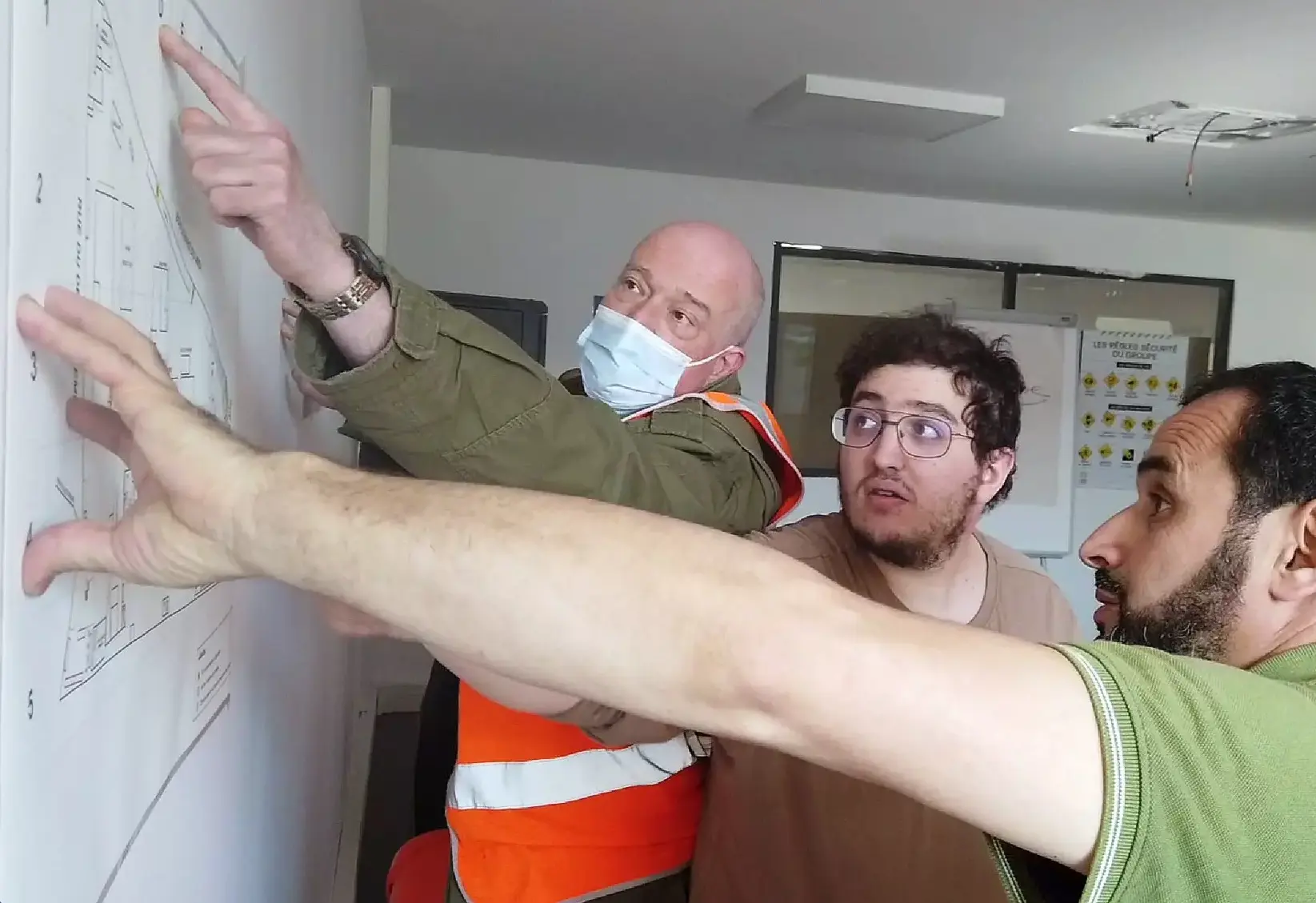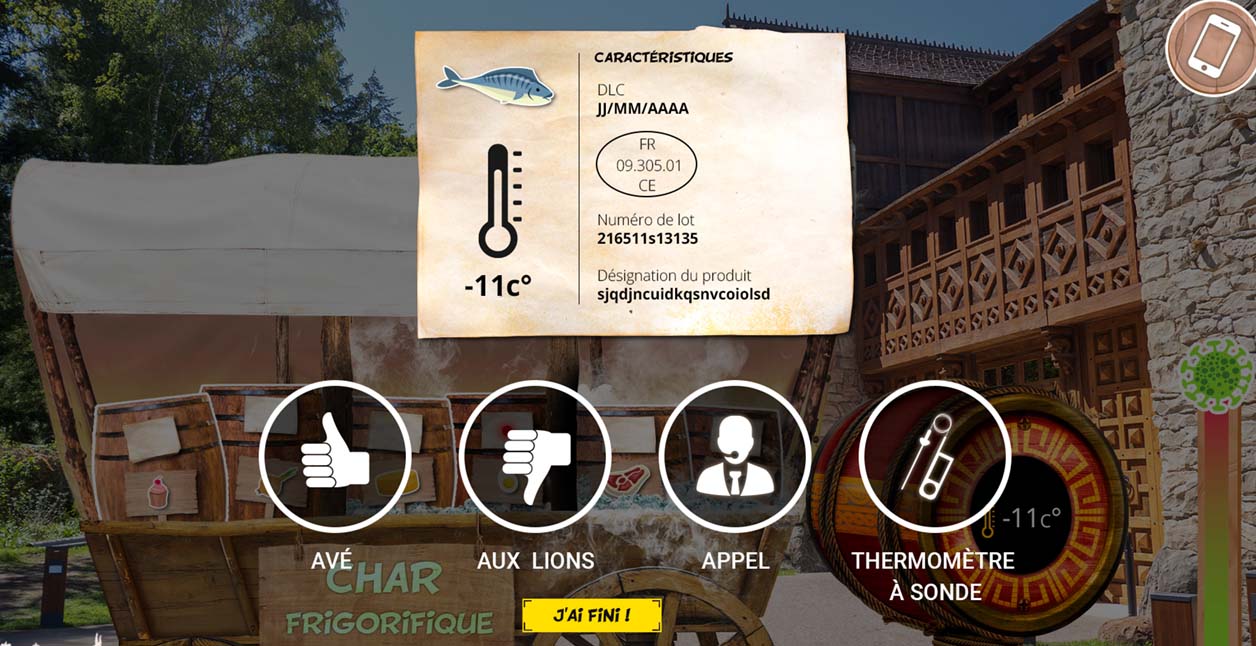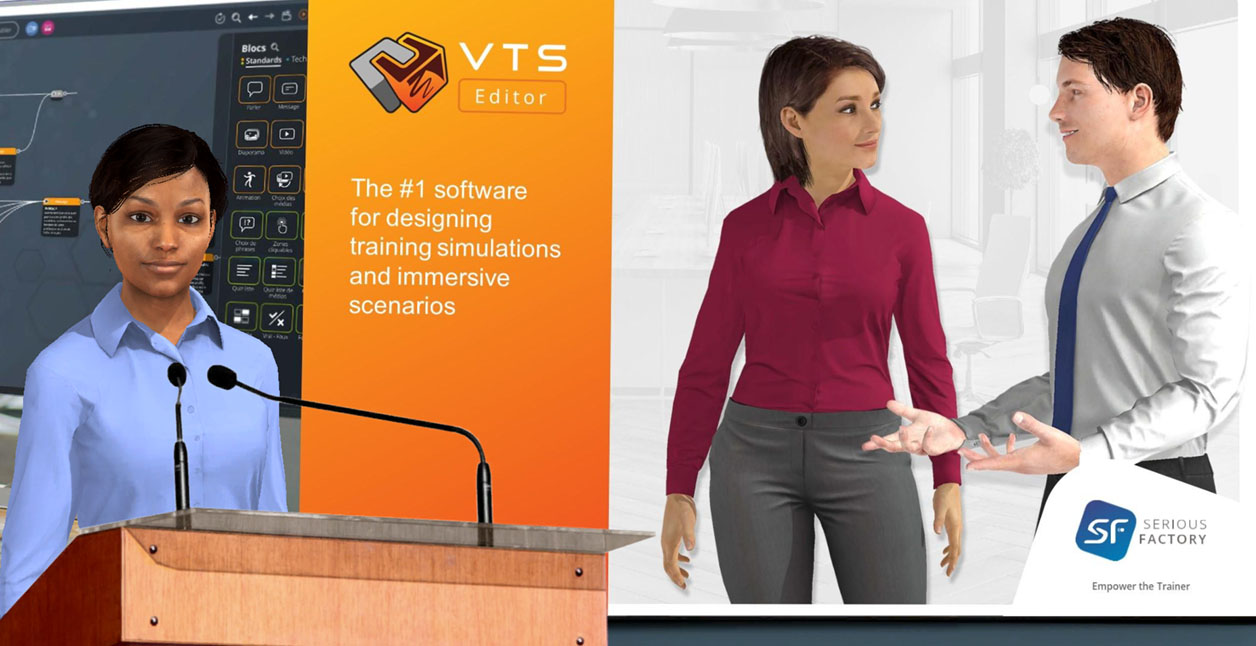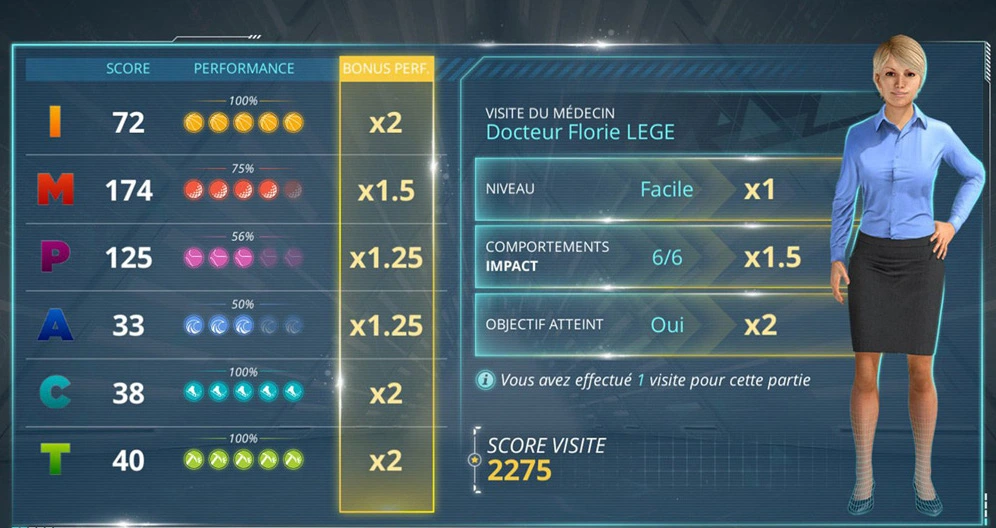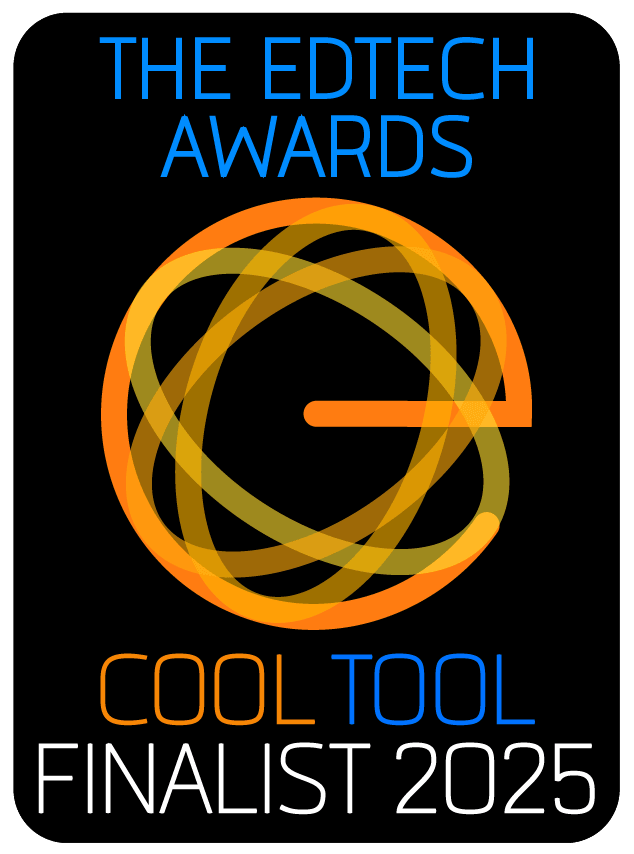
Serious GamesBoost the engagement of your learners and the effectiveness of your trainings
SUMMARY:
Serious Games, Game‑Based Learning, Educationnal games... What are they?
A Serious Game is much more than just a game: it's a fusion between serious goals (learning, skill assessment, communication) and game mechanics (gamification).
Far from being limited to pure entertainment reserved for Gamers, the Serious Game stands out with a clear goal: to transmit, develop, and measure skills through gameplay.
Serious Games are educational and interactive games that transform learning into experiences that are both captivating and instructive.
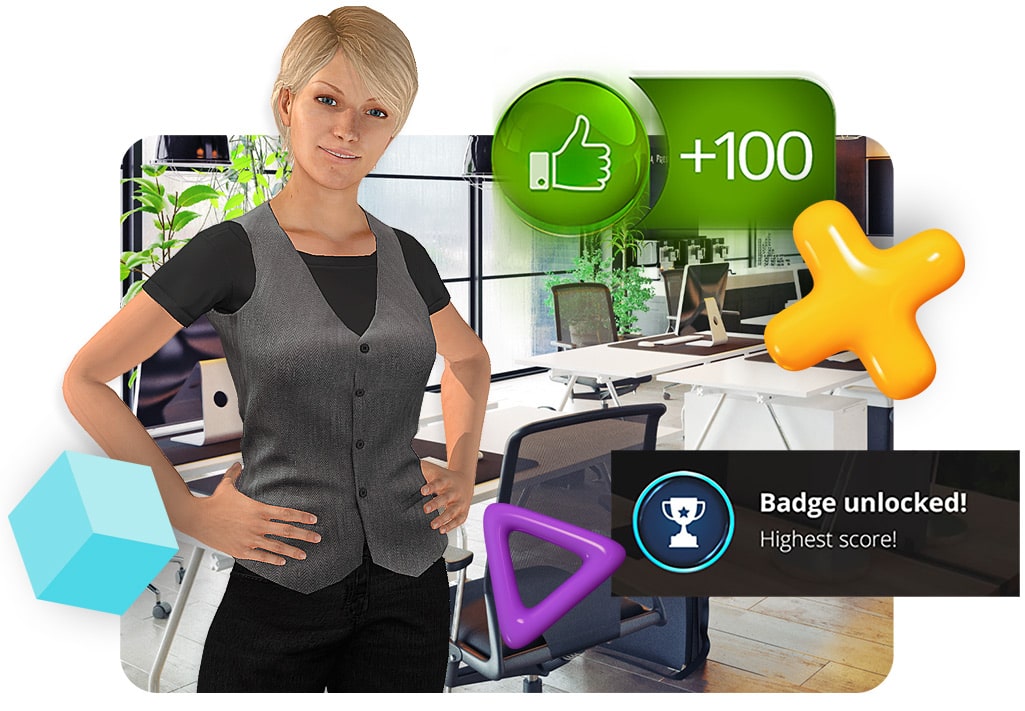
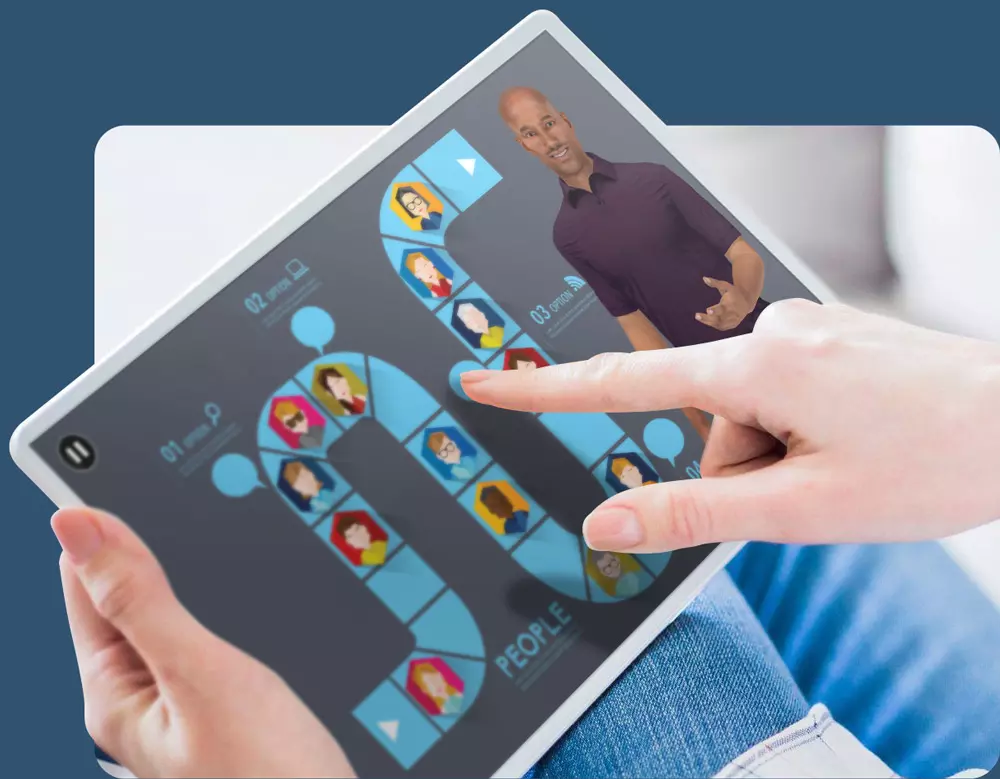
What are the benefits of Serious Games?
If we don't enjoy doing a task, it is very likely that it will be done poorly or not done at all.
Serious Games are a pedagogical approach that addresses this issue by developing real enjoyment in training among learners.
Imagine an E‑Learning course composed of hundreds of slides transformed into a captivating adventure and a playful device, where the story, the pedagogical objectives, and the rewards become the drivers of engagement.
By stimulating emotions, Serious Games possess a broad educational potential that enhances knowledge retention in a lasting way and significantly promotes learner engagement.
By relying on pleasure and self‑esteem, the gameplay experience of Serious Games appeals to powerful cognitive levers that ensure the real effectiveness of the training.
Many myths about "Serious Games" exist in the business world and are reflected in remarks like: 'I'm not here to play,' 'it’s expensive and time‑consuming to produce,' or 'A video game does not represent the reality of the field.' We have published a white paper on the subject.
How to create a Serious Game?
The creation of a Serious Game and playful situations is a process that revolves around several key steps.
With hundreds of Digital Learning projects developed over more than 12 years of existence, and tested by over 300 clients, Serious Factory has developed a 9‑step key design methodology. We have named this method 'Juicy Learning'.
You will find all the details of this method by downloading our white paper dedicated to this method.
The 9 stages of the Juicy Learning method
1. Define the pedagogical objective, target, and concept
First of all, it is important to clearly define why you are creating your Serious Game and what potential benefits you expect from it. It is therefore important to ask the right questions before starting, or you risk being unproductive. Most often, your game‑based training program project will respond to a strategic need for the company, and in this case, you will need to identify which problem it will help to solve.So start by answering these 3 questions:
- What is the pedagogical objective?
- Who is your target?
- What is the main concept of your Serious Game?
2. Identify the key messages
At this stage, write down all the notions that the learner must remember at the end of the module. These are the key content points that will help the learner progress in skills, behaviors, or knowledge. Generally, count about 5 key messages. Mastery of all key messages by the learner will mean achieving the pedagogical objective defined in step 1.If there are too many, it is likely that the Serious Game needs to be broken down into several chapters, if there are too few, maybe you have not included the learnings in their entirety.
3. Construct the architecture
At this stage, you have defined the broad outlines of your game‑based teaching and education project. Now it's time to design its contours and interactive modalities.The important thing here is to set the different key stages of your educational and interactive game. This is the step where you will think about your scripting and the playful activities to integrate.
What pace do you want to give your story? Who will be the characters involved and what are their personas? In which environments does the story take place? What theme to propose to get learners into the game? Will it be an escape game, a matching game, a role‑playing game, a science game, or management games among a wide range of possibilities...? We can call this phase: Game Design.
4. Distribute the key messages
In this pedagogical design step, the goal is to efficiently distribute the key messages that were identified during step 2.It is crucial to ensure a realistic balance in the distribution of key messages to maintain the learner's attention and avoid an unbalanced game experience. This step also requires deciding which type of interaction fits best for each message, which can range from simple sentence choices to specific mini‑games. In short, this phase is essential for defining clearly the pedagogical approach that will best serve to develop the desired skills.
5. Write the ideal scenario
The ideal path represents the most effective journey, where the learner makes all the right choices. For this step, it is essential that the designer builds this path without yet worrying about writing the incorrect choices; the goal is to put in writing the complete ideal storyline of the learning experience. It is also advisable not to dwell too much on the creation of interactions or staging at this stage. The priority remains to record the complete sequence of events in the digital game scenario.6. Create alternatives
Now that the ideal storyline is established, it is time to tackle the writing of the various alternative branches of the scenario. This phase involves thinking about the different ways to test the learner, the consequences of their mistakes, and their influence on the continuation of the scenario while retaining the playful and engaging aspects of the simulation game. The goal here is to be able to map the pedagogical progression of the learner throughout the learning experience.7. Evaluate with scores and debriefing
After having developed a playable and realistic scenario end‑to‑end, it is essential to move on to the step aiming to provide the learner with constructive feedback. The goal is to help them understand how they can improve and learn from their mistakes throughout the gamified training journey.8. Give your experience the Juiciness it deserves
Your Experience is now complete from a pedagogical and narrative point of view. The next step is to make it captivating and engaging by making it "Juicy". For this, two aspects must be considered with care: sound design and graphics.8. Give your experience the Juiciness it deserves
Your Experience is now complete from a pedagogical and narrative point of view. The next step is to make it captivating and engaging by making it "Juicy". For this, two aspects must be considered with care: sound design and graphics.9. Proofread and deploy
Take the necessary time for people who did not participate in the design of your project to read and test both the playful dimension and the active pedagogy of your experience. If you have the opportunity to conduct user testing, take it; objective feedback will help you identify errors and problems you would not pay attention to, such as typos or residual bugs.Once the content of your gamified educational tool has been meticulously reviewed, validated, and all quality checks have been performed, you are ready to publish your experience to learners. This is the moment to disseminate your project and share it with your target audience.
What tools to create Serious Games?
Are the steps to designing a Serious Game daunting? Don't feel capable?
Don't panic!
At Serious Factory, we have been working for over 15 years on the democratization of Serious Games and have been designing VTS Editor, the world's leading authoring tool for Serious Game design, for almost 10 years.
Without any technical or graphic skills and with the help of generative AI, the creation of virtual games is done in just a few hours.
Need help making your Serious Game?
Since 2007, Serious Factory has been transforming your training into more engaging and memorable experiences.
We support you in the success of your training strategy by providing solutions that enable the acquisition, development, and assessment of skills.
Our commitments
We support you in the creation, deployment and implementation of competency management while respecting costs, production deadlines and your brand identity.
Evolving projects
Our tailor‑made projects are designed with VTS Editor so that you can develop them independently.
Our expertise
Pedagogical engineering, storytelling, game design, digital training strategy audit and consultancy, research & development, UI/UX design... A watchword: Innovation.
Agile methodology
Your satisfaction is our priority. We work hand in hand until the final objective is achieved.
Frequently Asked Questions
What is a Serious Game?
A Serious Game is a means of embedding game‑based pedagogy in a training course for purposes other than mere entertainment. These playful tools aim to educate, train, inform, or raise awareness among players on various topics, such as learning new skills, health education, professional training, leadership, management, etc. By combining the playful aspect with the educational and interactive dimension, gaming facilitates engagement and memorization.
What are the main advantages of using a Serious Game?
The main benefits include improved learner motivation and engagement, the ability to simulate real situations safely, improved information retention due to interactivity, and the ability to learn at one's own pace in a fun environment through specific educational tools.
How can VTS Editor be used to create a Serious Game?
VTS Editor is an intuitive design tool that allows for the creation of interactive Serious Games without the need for programming skills. With its drag‑and‑drop interface, you can design complex scenarios, integrate quizzes, and simulate interactive dialogues, all aimed at engaging players in deep learning experiences.
Is it necessary to have programming skills to use VTS Editor?
No, VTS Editor was designed to be accessible to educational designers, trainers, and educators without in‑depth technical knowledge. Its intuitive platform enables the creation of immersive experiences without a single line of code.
What types of content can I integrate into a Serious Game created with VTS Editor?
With VTS Editor, you can integrate a wide variety of content, including text, images, videos, sounds, and quizzes. This allows for the construction of rich and varied learning experiences tailored to your educational objectives.
How to ensure player engagement in a Serious Game?
To maximize engagement, focus on creating relevant and engaging scenarios, use interactive elements like quizzes and dialogues, and tailor feedback according to player actions. VTS Editor makes it easy to integrate these elements to make the Serious Game more appealing.
How long does it take to create a Serious Game with VTS Editor?
The duration of creating a Serious Game depends on its complexity and the level of detail desired. With VTS Editor, it is possible to create quick prototypes and iterate on them, which can greatly reduce development time compared to traditional methods.
Are Serious Games created with VTS Editor compatible with Learning Management Systems (LMS)?
Yes, Serious Games designed with VTS Editor can be exported in formats compatible with major LMS on the market, such as SCORM or xAPI. This facilitates easy tracking of learner progress and engagement.
Can the effectiveness of a Serious Game be measured?
Absolutely. VTS Editor allows for the integration of assessment and feedback systems directly in the game. Moreover, thanks to the integration with LMS via SCORM or xAPI, it is possible to precisely track player performance, choices, and engagement to evaluate the effectiveness of the Serious Game.
Where can I find resources to get started with creating Serious Games with VTS Editor?
To get started with VTS Editor, you can consult the official website which offers tutorials, webinars, and comprehensive documentation. This support is designed to help novices quickly become comfortable with the tool and begin creating quality Serious Games.
Discover other educational modalities
Role‑playing scenarios
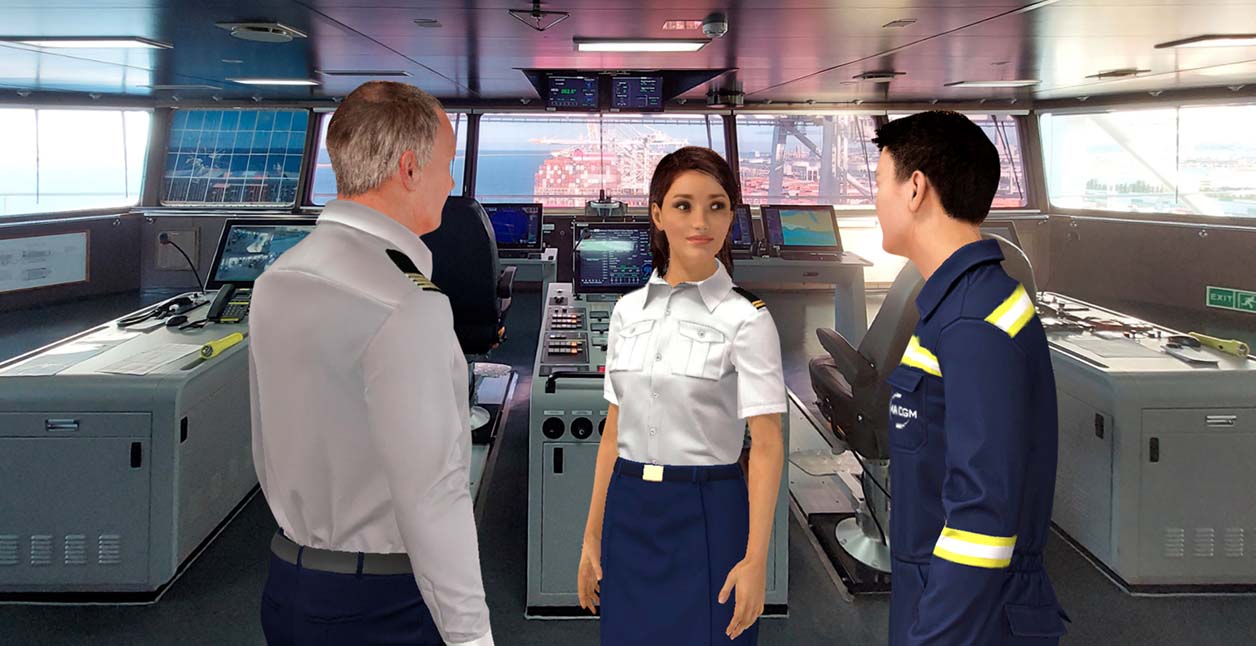
The BEST
of digital training
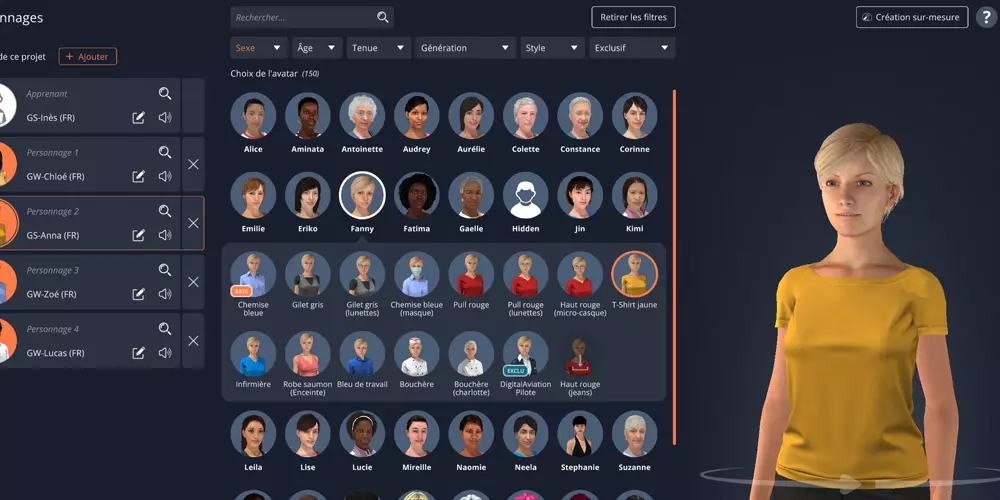

Design E‑Learning modules with VTS Editor
Quickly and easily design captivating Serious Games, e‑learning modules enriched by gamification, and practical situations to boost the ROI of your training.
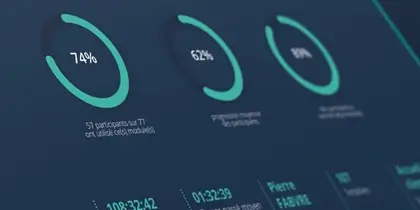

Deploy and analyze on our LMS platform VTS Perform
Explore VTS Perform, our intuitive solution for deploying and tracking your online training. Simple, personalized, ergonomic, offer your learners a pleasant and efficient training platform.
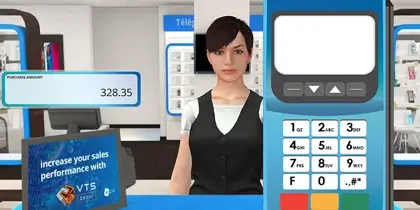

We create your custom E‑Learning courses
With over 15 years of experience, our team of experts is dedicated to supporting companies in the custom design of e‑learning and Serious Games, propelling learner engagement and the effectiveness of your training.
